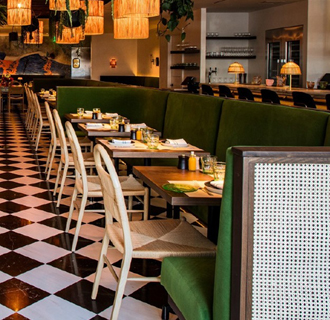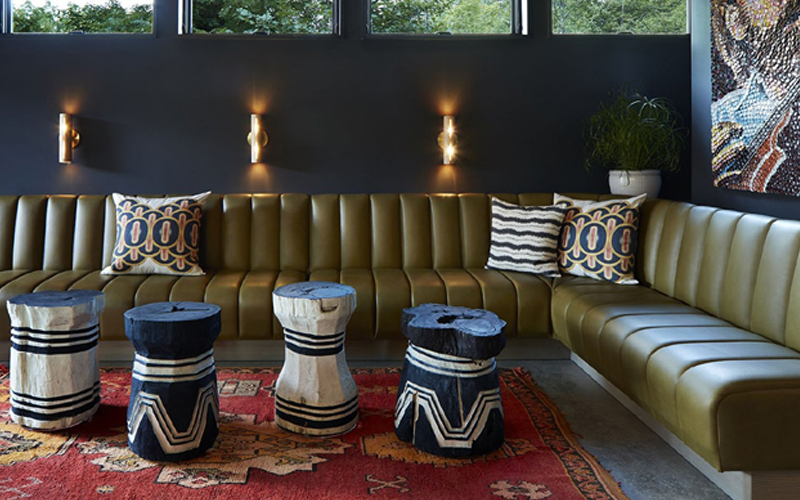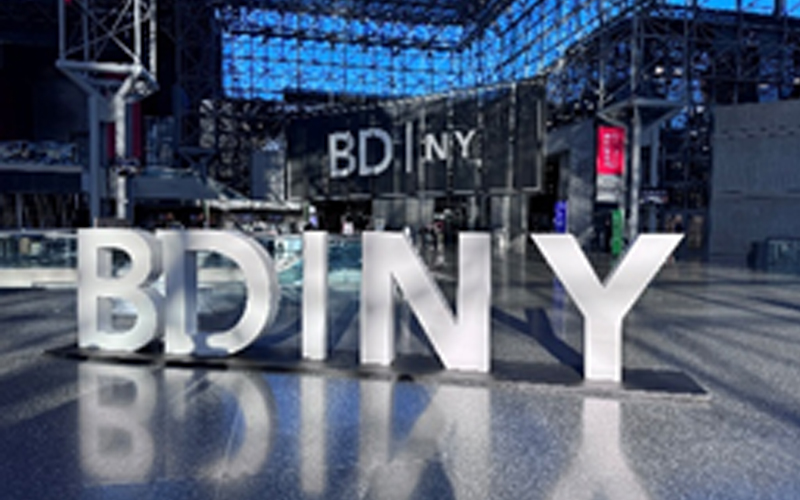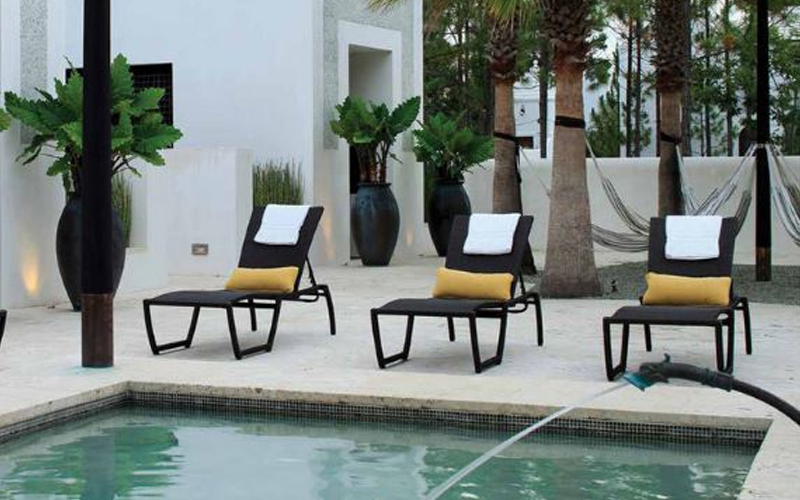
Product Debut from @GabbyContract
October 29, 2020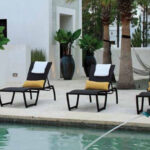
Pool Essentials: Setting the Scene for Summer
October 22, 2025We all love sliding into a booth or banquette — whether it’s in a cozy bistro tucked away on a quiet street, or in a hotel lobby with the perfect people-watching view. Booths offer a sense of privacy, a spot for relaxed conversation, or simply a welcome break from the bustle around us.
But for designers, operators, and purchasing teams, specifying a booth or banquette can feel intimidating at first. The good news? Like most projects, the best place to start is from the bottom and work your way up.
1. The Base
The standard base is a closed laminate base — think classic diner. It’s not glamorous, but it’s extremely practical and typically the most cost-effective option. Operators love this style because it makes floor cleaning a breeze — no food or debris can get trapped underneath.
The wood leg (open) base, on the other hand, creates a more elegant, elevated look. It’s ideal for non-traditional or upscale spaces, but keep in mind that cleaning the floor beneath these booths is a bit more challenging.
2. Sub Base vs. Big Seat
A sub base aligns with the look of a traditional booth. It’s cost-efficient, requiring less material, but the seat won’t stand out visually.
A fuller “big seat” creates a more plush, high-end look, giving the booth or banquette a distinct presence in the space. Both styles are built with the same construction quality and durability — the choice ultimately comes down to design preference and budget.
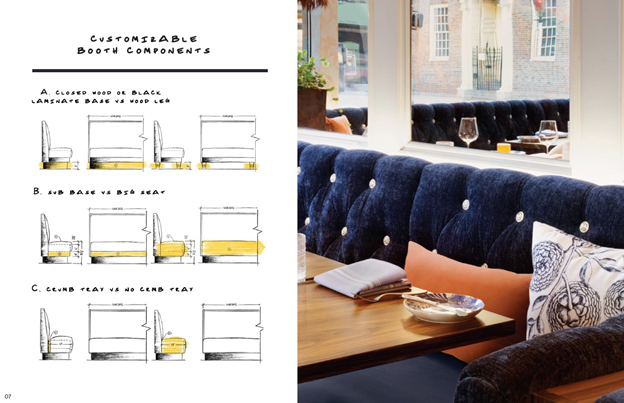
3. Crumb Tray vs. No Crumb Tray
This is often an operator vs. designer debate.
Crumb trays make cleaning quick and efficient — a must-have in high-volume restaurants. Designers, however, often prefer the cleaner aesthetic of booths without crumb trays. For upscale environments, crumb trays are usually omitted, but in busy dining spaces, they’re an invaluable feature.
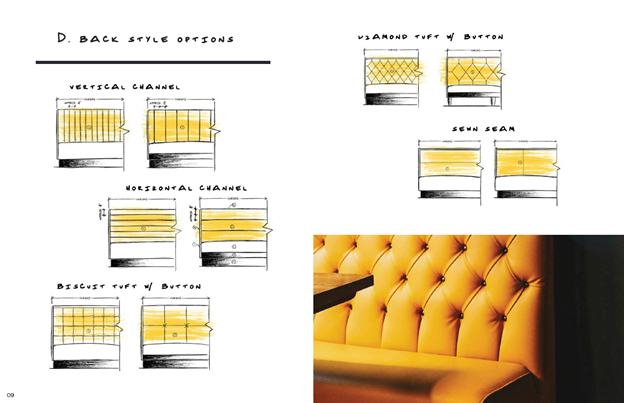
4. Back Style Options
Vertical or horizontal channels, tufting, smooth backs, and more — the options are virtually endless. The booth back is a powerful design element that can help define the ambiance of any hospitality venue — whether it’s a pub, fine dining restaurant, diner, or French café.
With New England Seating, you’ll find a wide range of back styles to match your vision.
5. Headrest vs. No Headrest
No, your guests won’t be taking naps — this is a purely aesthetic decision.
A one-piece back offers a clean, simple look, while adding a headrest breaks up the profile and can add visual interest or height variation.
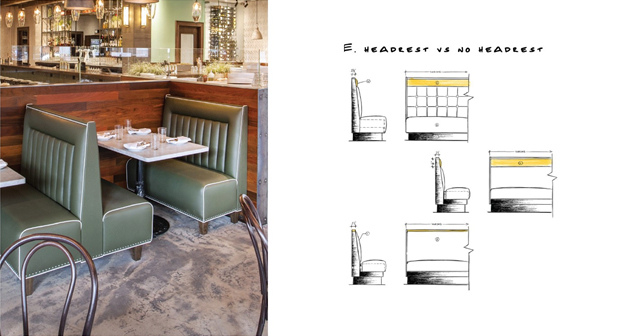
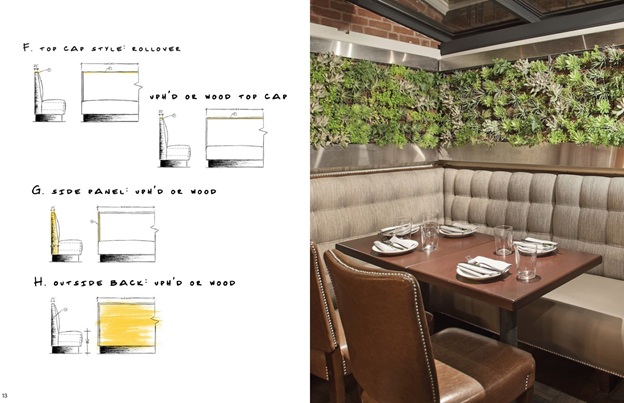
6. Top Cap, Side Panels & Outside Back
These details can have a significant impact on the overall budget and look of the booth.
- Upholstered tops, side panels, and backs are typically more cost-effective.
- Wood tops, panels, and backs add character and can elevate the entire design. In some projects, they’re essential to achieving the desired look and feel.
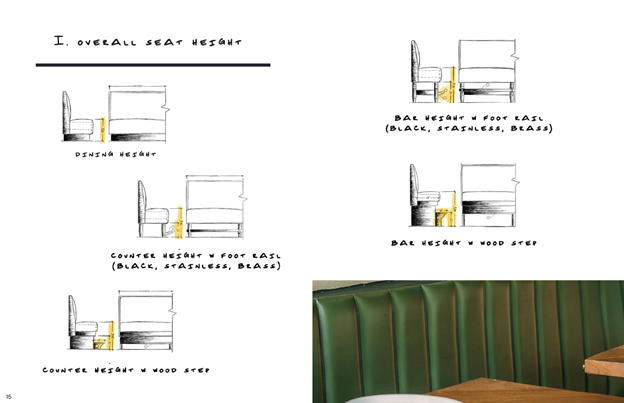
7. Overall Seat Height
Booths and banquettes are available in dining, counter, and bar heights, allowing them to integrate seamlessly across different spaces in a hospitality project. New England Seating can provide solutions for every zone of your venue.
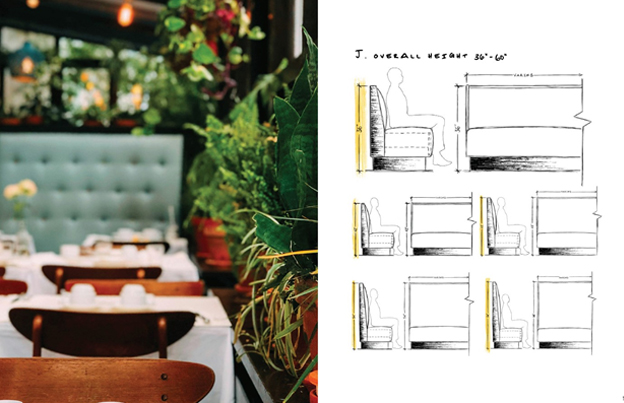
8. Overall Height
Standard overall back heights typically range from 36” to 60”. This dimension affects both the price and the booth’s visual impact. Whether you’re looking for low, casual seating or tall, dramatic backs for added privacy, New England Seating can manufacture to meet your exact design requirements.
Ready to Get Started?
Send us your floor plan, inspiration images, or even a sketch on a napkin — New England Seating will bring your vision to life, creating custom booths and banquettes that fit your space perfectly.
